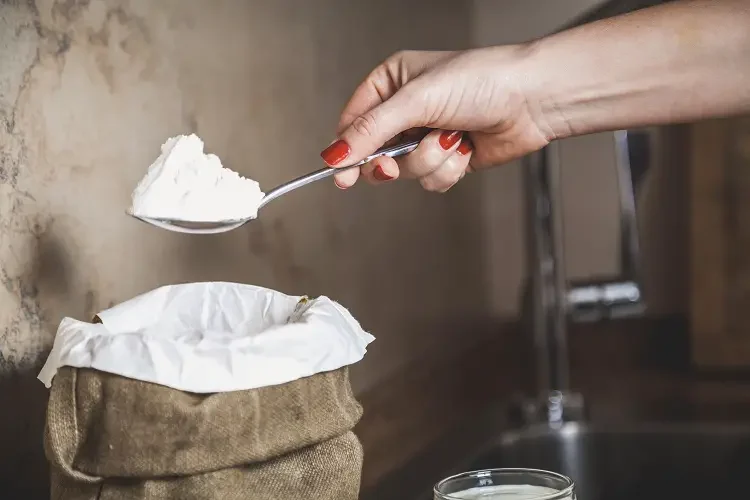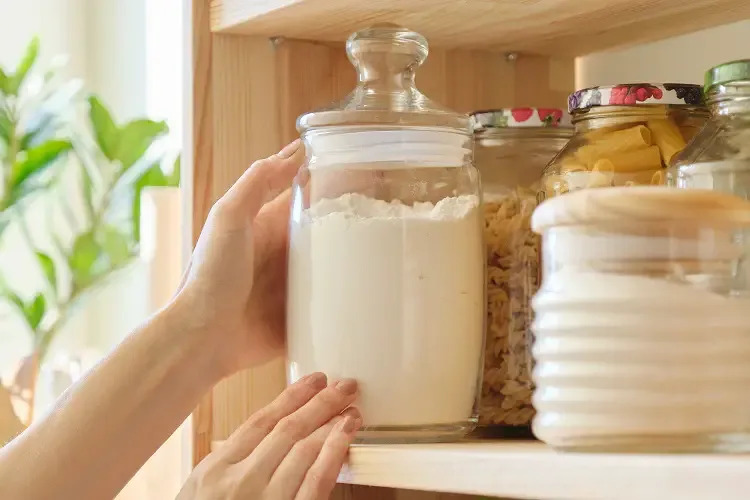SHTFDad may collect a share of sales or other compensation from the links on this page.
Flour is a key ingredient in countless culinary creations. It occupies an important place in our kitchens.
But ensuring flour longevity and quality can be a challenge, especially when we talk about how to store flour long-term. How do you keep flour strong and fresh for the long term?
Storing flour long-term requires special consideration to preserve its freshness and quality. Proper storage methods can prevent the flour from spoiling. By applying effective long-term storage methods, you can ensure that your flour remains usable for a long period.
This text will dive into the art of long-term flour storage. We’ll explore the factors that contribute to flour deterioration over time. And we will offer practical strategies to keep it fresh and usable for months or even years.
From choosing the right containers and storage conditions to using effective preservation methods. We reveal you can store flour long-term, preserving its nutritional value and flavor.
Whether you’re a passionate home baker or a professional chef, understanding flour storage principles can revolutionize your culinary endeavors. Join us as we take you on a journey. We’ll uncover the secrets of flour preservation for all your baking adventures.
Reasons Why Flour Goes Bad
Flour is a common ingredient used in baking and cooking. But can you store flour long-term? Unfortunately, it can go bad under certain circumstances.
We certainly do not recommend the use of spoiled flour. Spoiled flour can have a rancid smell, mold, or a musty taste. It indicates that it has deteriorated and is no longer safe to use.
Using tainted flour in recipes can affect the taste, texture, and quality of food. But that’s only half the trouble!
Consuming tainted flour can also pose health risks. Here are the most common reasons why storing flour long-term will affect quality:
Moisture
Flour contains a small amount of moisture. It can absorb more moisture if exposed to high humidity or stored in a humid environment.
It leads to clumping, mold, or bacterial growth. You may also notice an unpleasant odor appearing. Want to know how to store flour long-term?
At a minimum, store flour in airtight containers in a dry and cool place.
Oxygen Exposure
Flour can also deteriorate when exposed to oxygen for an extended period. Oxygen can cause the flour to oxidize, resulting in rancidity and a stale taste.
Also, flour oxidation can lead to a loss of nutritional value due to rancidity and stale flavor. It can reduce the quality of the flour and affect the taste and texture of products.
Pests
Flour is a food source for pests such as weevils and pantry moths. These insects can lay eggs in the flour, leading to infestations.
Logically, no one wants to consume flour that someone has run on. In addition, animals can be carriers of other dangerous diseases.
Age
Flour has a limited shelf life. It is because it contains a lot of natural oils. Over time they can all go rancid. Remember that the longevity of wheat flour is usually longer than flour made from nuts.
However, we recommend that you remember to look at the expiration date. Use flour in a reasonable amount of time to ensure its freshness.
Improper Storage
Storing flour in unsuitable conditions can cause it to absorb odors and flavors. For example, your flour is next to strong-smelling items such as cleaning products.
Storing your flour in a designated area away from strong-smelling substances is best.
Cross-Contamination
Flour should not come into contact with ingredients that contain moisture or contaminants. For example, do not store it with raw eggs or spoiled foods.
Otherwise, it could go bad quickly. Always use clean utensils and equipment when handling flour to avoid cross-contamination.
Temperature Fluctuations
Extreme temperatures can affect stored flour long term. High temperatures can lead to bacterial growth. Low temperatures can cause condensation and mold growth. Storing flour in a cool and constant temperature environment is critical.
You can take appropriate action by understanding these common causes of flour spoilage. Then you can know how to store flour long term. You can ensure its freshness and safety for use in your culinary endeavors.
Best Ways to Store Flour
Proper storage of flour is necessary to keep it fresh. But it will also help prevent spoilage, and you can store flour long-term.
Follow these storage rules. This way, you can maximize the shelf life of the flour and preserve its quality. It will help you meet your baking and cooking needs.
Here are some of the best ways to store flour:
Container
Transfer flour from its original packaging to airtight containers. It can be, for example, glass jars or food-grade plastic containers.
Ensure the containers have a tight seal to keep out moisture, air, and pests. Clear containers are preferable as they allow you to see the flour’s condition easily.
Freezer
If you want to extend the shelf life of flour, consider storing it in the freezer. Freezing flour can help slow the oxidation process and keep it fresh for longer.
Place the flour in a resealable freezer bag or airtight container and label it with the date. Before using frozen flour, let it come to room temperature to avoid condensation.
Vacuum Sealer
Using a vacuum sealer is a great option for storing flour long-term. All because you can remove excess air from the package. This way, you can prevent moisture from getting into the flour.
Vacuum bags or containers can greatly extend the shelf life of flour. This method is especially useful for large quantities of flour or buying flour in bulk.
Dark and Dry Retreat
Flour is sensitive to light and moisture, so storing it in a cool, dark, and dry place is best. Direct sunlight can cause the flour to spoil quickly.
Choose a pantry or cupboard away from the stove, sink, or heat source. Avoid storing flour in the refrigerator as it can introduce moisture.
Rotation Ritual
To keep the flour fresh, practice a rotation system. Use the oldest flour first and replenish regularly.
This method prevents the storage of flour longevity. It minimizes the risk of it spoiling.
Pest Prevention
Protect flour from pests by placing bay leaves or dried chili peppers in the containers. These natural repellents can help deter weevils and pantry moths.
Also, make sure the flour is clean and free of food residue. This way, pests will not be able to infest the flour.
Before using, be sure to check the flour for signs of spoilage. Watch for things like an unpleasant odor, clumping, or discoloration.
When in doubt, it is best to discard flour that appears to be spoiled or has exceeded its expiration date.
Conclusion
So you have the answer to how to store flour long-term? Proper storage of flour is essential to preserve its freshness and quality.
Moisture, oxygen exposure, pests, improper storage conditions, and age are common factors that can cause flour to spoil.
But you can extend the life of fresh flour! Use airtight containers, store flour in a cool and dark place, and use a rotation system and other measures; you can extend the shelf life of flour.
Freezing and vacuum sealing are additional options worth considering. Following these storage guidelines ensures that your flour stays fresh, flavorful, and ready to use in your culinary creations.
References:






